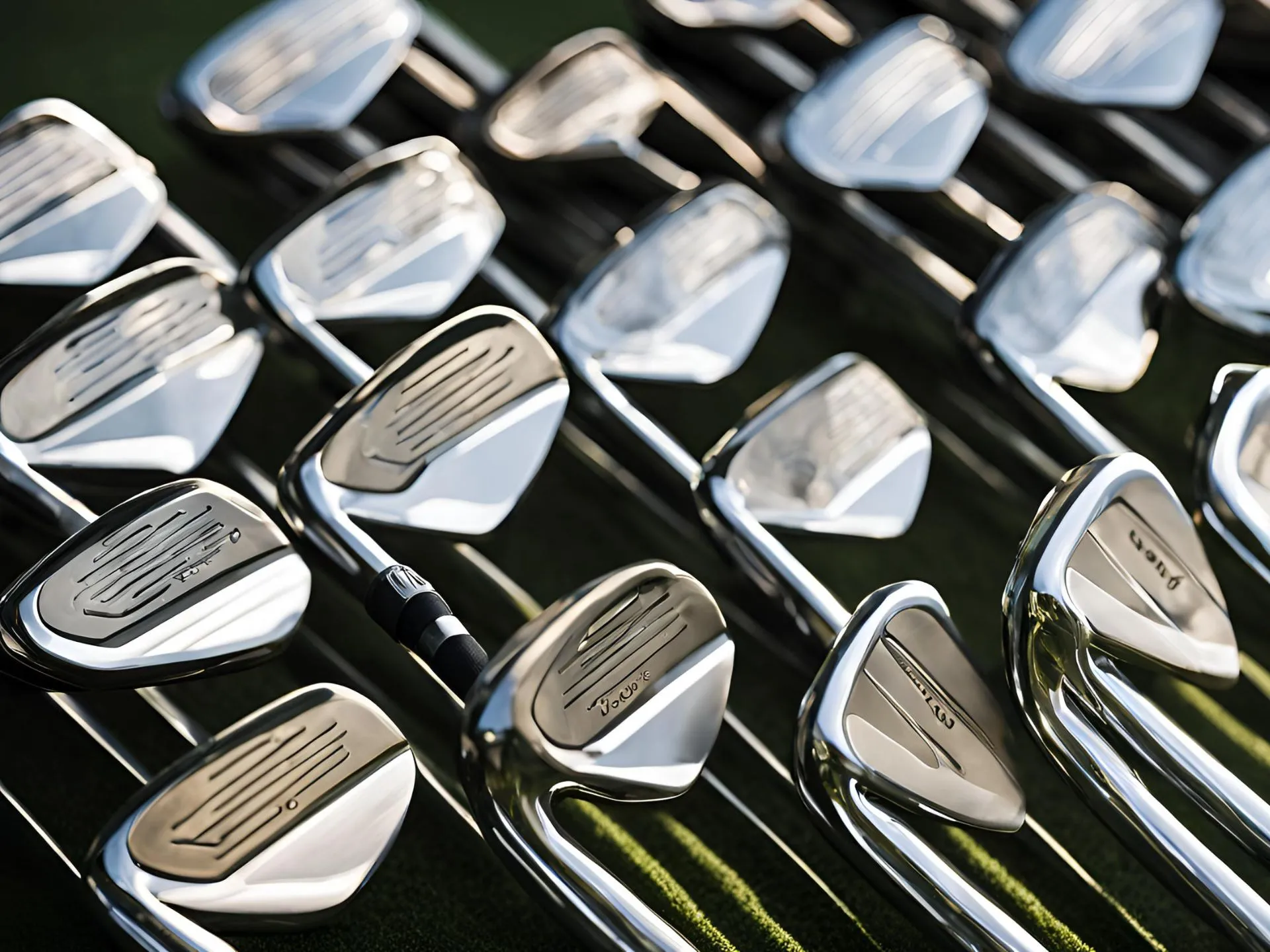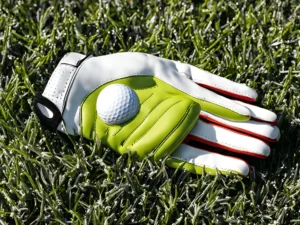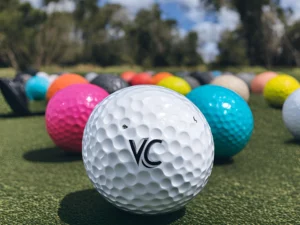Golf is a sport that intricately blends skill, technique, and the right equipment. Within this realm, golf clubs play a critical role, especially the components like shafts and club heads. This guide aims to provide a detailed understanding of these essential parts, their evolution, and how they influence a golfer’s performance on the course.
Introduction to Golf Clubs
The evolution of golf clubs traces back to the mid-15th century, reflecting significant advancements over the centuries. Early golfers fashioned clubs from local woods, utilizing different types of wood for shafts and club heads. For example, shafts were commonly crafted from hazel or ash, while harder woods like holly and beech served as club head materials. The introduction of metal clubs, particularly irons, began in the 18th century, transitioning from crude blacksmith creations to more refined designs by the late 19th century. Today’s golf clubs are a testament to extensive technological advancements and material innovations, significantly enhancing both performance and playability.
The Evolution of Golf Clubs
As golf progressed, the materials used in clubs evolved dramatically. Initially, the clubs made were simple wooden structures, but as the game grew, so did the demand for superior performance. The integration of metal, such as the use of steel and titanium, revolutionized the design and functionality of club heads, allowing for greater durability and precision. Modern golf clubs are often made from a combination of materials, including composite materials and graphite shafts, which aid in optimizing swing speed and control. Understanding this evolution helps golfers appreciate the intricate craftsmanship behind every set of clubs.
Importance of Understanding Golf Club Components
In the pursuit of improvement, understanding the various components of golf clubs is paramount for any golfer. Each part, including the shaft, head, and grip, contributes uniquely to the overall performance of the club. For instance, the material used for shafts—whether it’s a steel shaft or a graphite shaft—can significantly influence swing speed and accuracy. Meanwhile, the design of the club head, including factors like the club face and driver head configuration, affects distance and control over shots. Familiarity with these components empowers golfers to make informed decisions when selecting or customizing their clubs, leading to improved performance on the golf course.
Overview of Golf Club Types
Golf clubs are categorized into several distinct types, each tailored for specific purposes on the course. Woods, primarily utilized for long-distance shots, have transitioned to modern materials like titanium and composite materials for enhanced performance. Irons, celebrated for their versatility, now incorporate innovations from forged iron to stainless steel and carbon steel. Hybrids have emerged as a popular choice, combining features of both woods and irons for those who may find traditional long irons challenging. Putters, essential for the green, can be crafted from various materials, with stainless steel being prevalent. Understanding these types equips golfers to select the right clubs that align with their playing style and preferences.
Golf Club Shafts
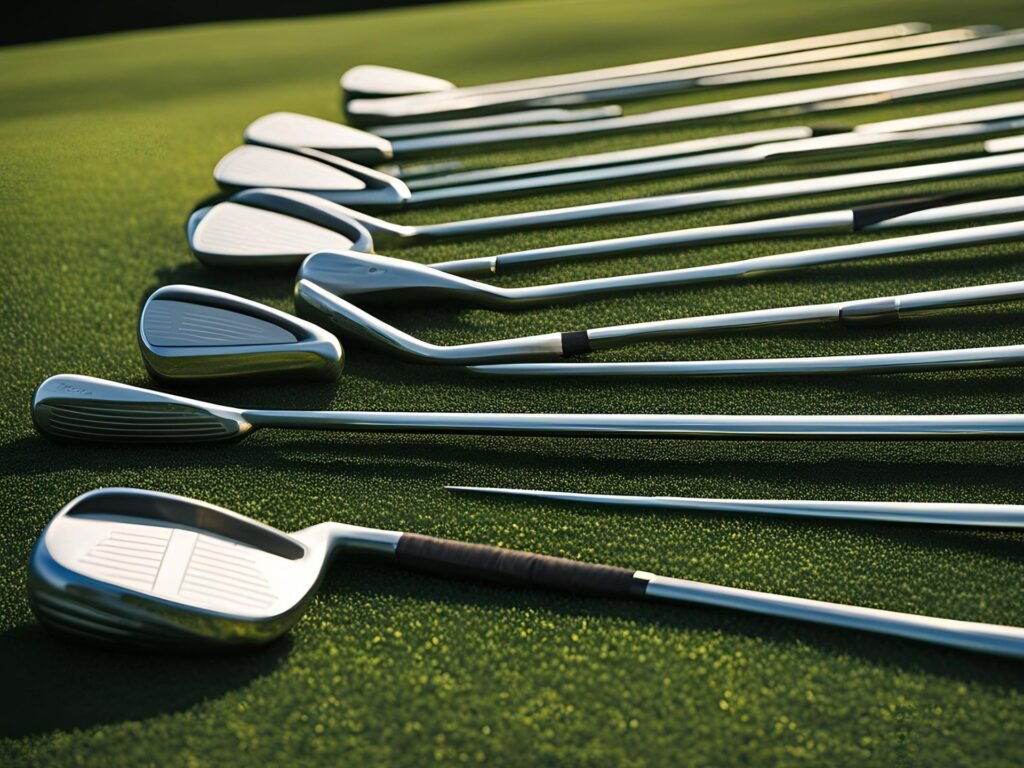
Types of Shafts: Graphite vs Steel
Golf club shafts are primarily made from two materials: steel and graphite. Steel shafts are known for their durability and provide greater control, making them ideal for players with faster swing speeds. They typically weigh more than graphite shafts, which can help with accuracy. In contrast, graphite shafts are lighter, allowing for increased swing speed and are often favored by beginners, seniors, and players with slower swing speeds. The choice between steel and graphite largely depends on the golfer’s skill level, swing speed, and personal preference.
Benefits of Graphite Shafts
Graphite shafts offer several advantages, especially for players seeking to enhance their swing speed. They are significantly lighter than steel shafts, which can lead to increased distance due to faster swings. Graphite also provides more flexibility, allowing for a smoother swing and better energy transfer to the ball. Additionally, the vibration dampening properties of graphite can reduce the impact on the hands, making it more comfortable for players with joint issues. These benefits make graphite shafts particularly appealing to beginners and those with slower swing speeds.
Advantages of Steel Shafts
Steel shafts are favored for their strength and stability, providing consistent performance for players with faster swings. They offer better control and feedback, allowing skilled golfers to make precise shots. The heavier weight of steel shafts can contribute to improved accuracy, especially for those who can generate higher swing speeds. Furthermore, steel shafts are generally more durable than graphite, making them a cost-effective choice for players who frequently practice or play. As a result, many experienced golfers prefer steel shafts for their reliability and performance.
Golf Club Heads
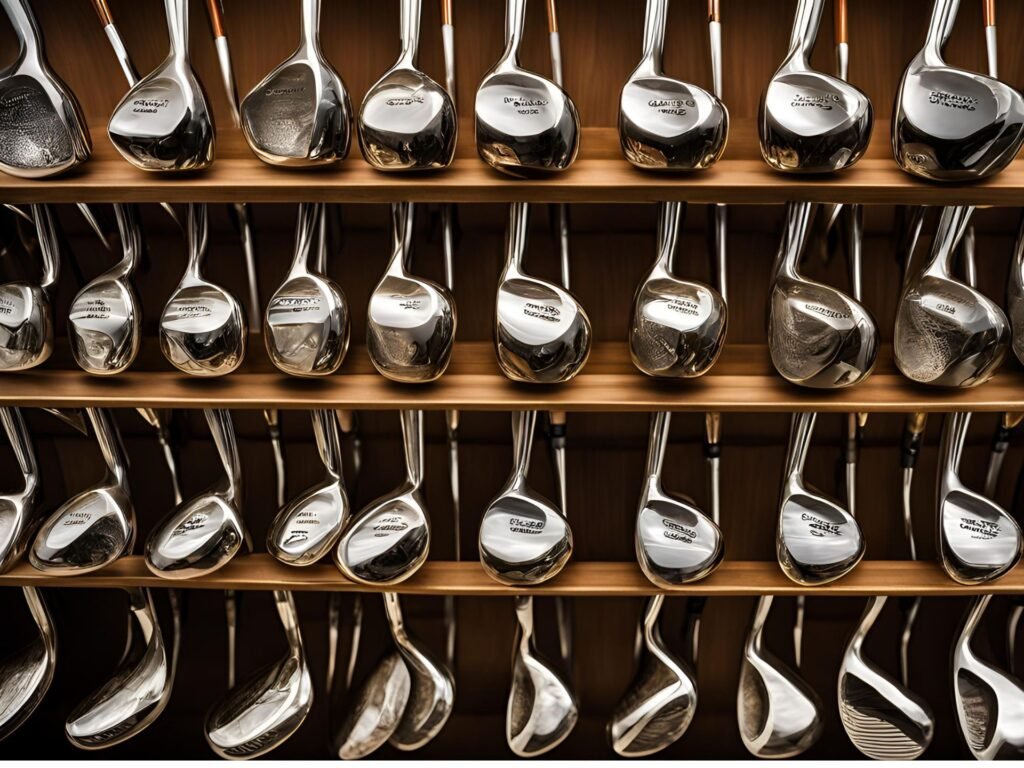
Materials Used in Club Heads
Modern golf club heads are constructed from a variety of materials, each chosen for specific performance characteristics. Titanium is commonly used for drivers due to its high strength-to-weight ratio, allowing for larger club heads without added weight. Stainless steel is the most prevalent material for irons and putters, providing durability and ease of casting into complex shapes. Additionally, composite materials, including carbon fiber, are utilized to reduce weight and vibrations. Each material impacts the club’s performance, influencing factors such as distance, control, and feel.
Understanding Club Head Design
Club head design is critical to a golf club’s performance, affecting aspects such as aerodynamics, weight distribution, and forgiveness. Modern drivers often feature adjustable weights and lofts, allowing players to customize their clubs for optimal performance. The face design of club heads also plays a significant role, with grooves engineered to enhance spin and control. Understanding these design elements helps golfers select clubs that match their playing style and improve their overall game.
Impact of Club Head Size on Performance
The size of a golf club head significantly influences performance. Larger club heads, particularly in drivers, provide a larger sweet spot, making it easier to achieve solid contact with the ball. This design feature is beneficial for amateur golfers who may struggle with consistency. However, smaller club heads can offer more control and precision for skilled players. The balance between size and performance is crucial, as it affects the golfer’s ability to hit accurate and powerful shots.
Grip and Comfort
Importance of Club Grips
The grip of a golf club is essential for maintaining control and comfort during a swing. A proper grip ensures that the golfer can hold the club securely without excessive tension, allowing for a more fluid swing. Quality grips also play a significant role in preventing blisters and improving overall comfort, which can enhance performance on the course. Choosing the right grip size and material can greatly impact a player’s ability to execute shots effectively, leading to consistency in their game.
Types of Club Grips
Golf club grips come in various materials and textures, with rubber and synthetic materials being the most common. Rubber grips provide a good balance of comfort and durability, making them suitable for a wide range of golfers. On the other hand, cord fabric grips offer enhanced traction, especially in wet conditions, ensuring a firm hold during play. Leather grips, although less common due to their higher cost and lower durability, are still preferred by some players for their classic feel and superior grip. The choice of grip material and design is largely a matter of personal preference, affecting the overall feel and control of the club.
How Grip Affects Your Game
The grip of a golf club significantly affects a golfer’s performance. A proper grip allows for better control over the club, impacting swing mechanics and shot accuracy. If the grip is too small or too large, it can lead to tension in the hands and arms, resulting in inconsistent shots. Additionally, the texture and material of the grip can influence how well a player can hold onto the club in various weather conditions. Understanding the importance of grip can help golfers make informed choices that enhance their game and overall enjoyment of golf.
Choosing the Right Golf Clubs
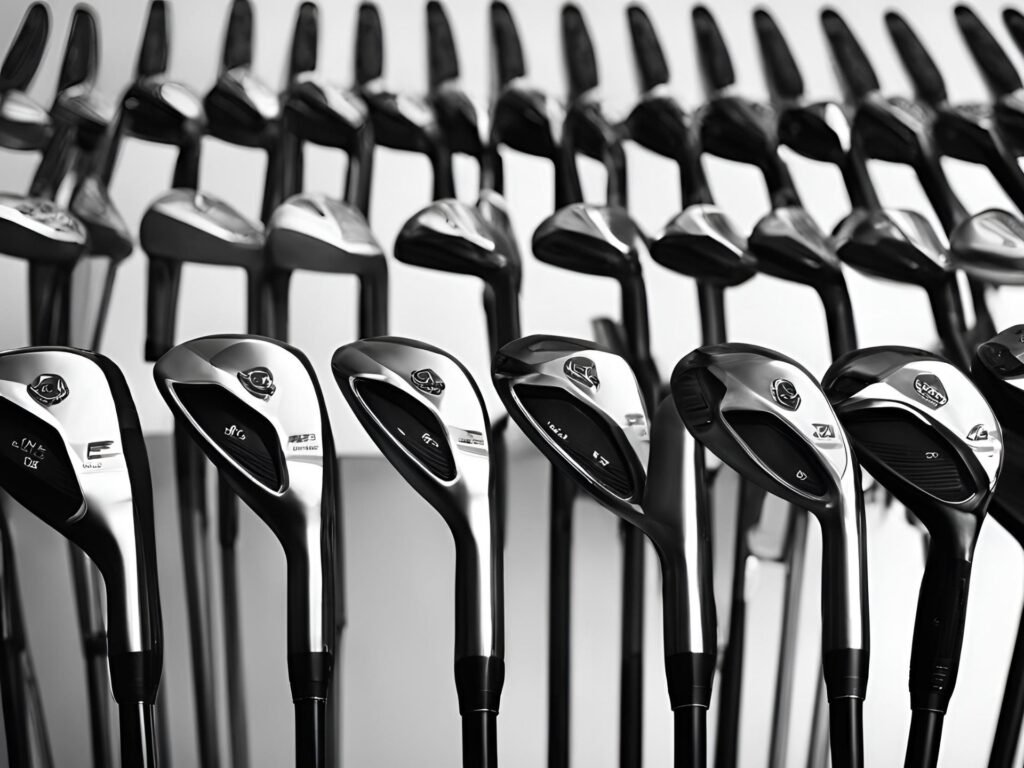
Factors to Consider When Selecting Golf Clubs
When selecting golf clubs, several factors should be considered to ensure the best fit for individual playing styles and preferences. These include the golfer’s skill level, swing speed, and physical characteristics such as height and hand size. Additionally, the type of clubs needed—woods, irons, hybrids, or putters—should align with the golfer’s typical course conditions and playing style. Custom fitting sessions can provide valuable insights into the ideal specifications for each golfer, enhancing overall performance and ensuring that golfers are equipped with the right tools for success on the course.
Custom Fitting for Golf Equipment
Custom fitting is an essential process for golfers looking to optimize their equipment for better performance. During a fitting session, professionals assess various factors, including swing speed, launch angle, and preferred club length, to recommend the best specifications for each player. This personalized approach can lead to improved accuracy, distance, and overall enjoyment of the game. Many golf retailers offer complimentary fitting sessions, making it accessible for golfers of all skill levels. By investing time in custom fitting, players can significantly enhance their game and feel more confident in their equipment.
Maintaining Your Golf Clubs
Proper maintenance of golf clubs is crucial for ensuring longevity and optimal performance. Regular cleaning of club heads and grips helps prevent dirt buildup that can affect performance. Additionally, checking the condition of grips and replacing them when worn can improve comfort and control. Storing clubs in a protective bag and avoiding extreme temperatures can also prolong their lifespan. By taking care of their equipment, golfers can maintain consistent performance on the course, ensuring that their set of clubs remains in peak condition for every round of golf.
The Future of Golf Club Technology
Innovations in Club Shaft Materials
Advancements in technology have led to the development of new materials for golf club shafts, enhancing performance and customization options. Graphite shafts have become increasingly popular due to their lightweight nature and ability to improve swing speed. Innovations in composite materials are also emerging, allowing for further customization in flex and weight distribution. These advancements enable golfers to find shafts that better match their swing characteristics, improving overall performance.
Advancements in Club Head Engineering
Club head engineering has seen significant advancements, particularly with the introduction of adjustable features and materials. Modern driver heads often feature adjustable weights and lofts, allowing players to fine-tune their clubs for optimal performance. Additionally, the use of advanced materials such as titanium and carbon composites has led to lighter, more durable club heads with larger sweet spots. These innovations enhance distance, accuracy, and forgiveness, making golf more accessible to players of all skill levels.
The Role of Technology in Modern Golf
Technology plays a pivotal role in modern golf, influencing everything from club design to training aids. Innovations such as launch monitors and swing analyzers provide golfers with valuable data to improve their game. Additionally, advancements in club manufacturing allow for more precise engineering, resulting in clubs that better match individual player needs. As technology continues to evolve, it is likely to further enhance the golfing experience, making it more enjoyable and effective for players at all levels.
What did golf clubs used to be made of?
Historically, golf clubs were primarily made from wood, with early clubs crafted from local materials such as hazel, ash, and other hardwoods. The club heads were often made from stronger woods like holly and beech. As the game evolved, the introduction of iron clubs occurred in the 18th century, initially made by blacksmiths. These early metal clubs were crude compared to today’s standards, but they marked a significant shift in golf club manufacturing. Over time, advancements in technology and materials have led to the modern clubs we use today.
What material are golf clubs made of?
Modern golf clubs are made from a variety of materials, each chosen for specific performance characteristics. The shafts are predominantly made from steel or graphite, with composite materials being used as well. Club heads typically utilize materials such as titanium, stainless steel, and various alloys. Titanium is favored for drivers due to its strength-to-weight ratio, while stainless steel is commonly used for irons and putters. Additionally, composite materials like carbon fiber are increasingly being integrated into club head designs to enhance performance.
What are cheap golf clubs made of?
Cheap golf clubs are often made from less expensive materials such as aluminum or lower-grade stainless steel. These materials are cost-effective but may not provide the same level of performance or durability as higher-end options. Clubs made for beginner sets or junior golfers frequently utilize these materials to keep costs down while still offering a functional product. While they may not perform at the same level as premium clubs, they can still be suitable for new players learning the game.
Are golf clubs made of wood?
While many golf clubs retain the term “wood,” modern clubs are rarely made from actual wood. Historically, wooden shafts were common, and club heads were crafted from hardwoods like persimmon. However, advancements in technology have led to the use of materials such as titanium and composites for club heads, providing better performance and durability. Today, the term “wood” primarily refers to the club’s shape and intended use rather than the material from which it is made.
What metal are golf irons made from?
Modern golf irons are primarily made from stainless steel, which offers durability and resistance to rust. Some irons are also made from carbon steel, which is favored for its softer feel and ability to provide better feedback on shots. Additionally, various alloys and composite materials may be used in the construction of iron heads to enhance performance. The choice of metal can significantly affect the iron’s weight, feel, and overall playability.
What are most golf clubs made of?
Most modern golf clubs are made from a combination of materials tailored to enhance performance. The shafts are typically made from steel or graphite, with graphite being popular for its lightweight properties. Club heads are often constructed from titanium, stainless steel, or composite materials. The use of advanced materials allows for improved design features, such as larger sweet spots and adjustable weights, making golf clubs more forgiving and effective for a wider range of players.
Are golf clubs worth anything in scrap?
Golf clubs can have some value as scrap, particularly if they are made from metals like steel or titanium. Scrap yards often pay for metal based on weight, and the value can vary depending on current market prices. However, the amount received for scrap clubs is typically minimal compared to their original purchase price. Golfers looking to dispose of old clubs may consider donating them to local charities or programs that provide equipment to beginners instead of scrapping them.
Read More:
- Why Is My Gas Golf Cart Slow? Common Reasons
- Club Car Onward Lithium: High-Performance Golf Cart
- Troubleshooting Electric Golf Cart Motor Issues: Signs & Brush Repair
- Experience Golf at Home with a Golf Simulator
- Average Golf Drive Distance by Age: What to Expect
- Average Golf Ball Speed by Age: What to Expect
- Understanding E-Z-Go Golf Cart Transmission Problems: Causes and Solutions
- Understanding Why Your Golf Cart Runs with the Key Off: A Troubleshooting Guide
- Golf Ball Bags: Combining Convenience and Style

